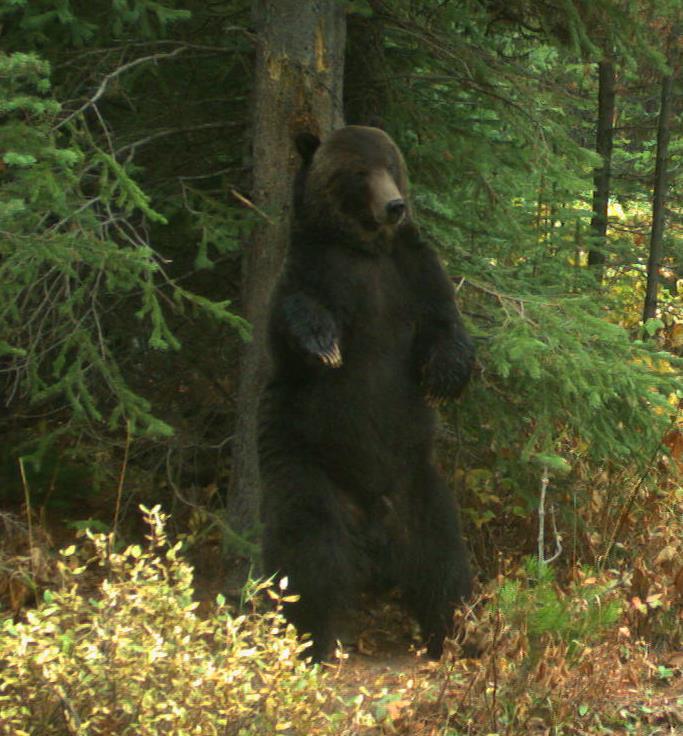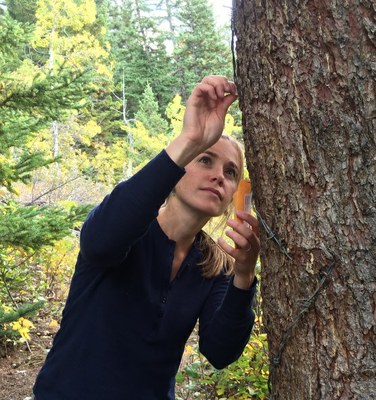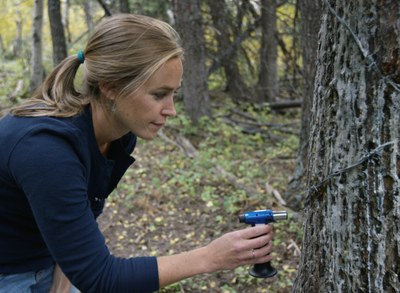If you’ve ever spotted a grizzly bear in the wild, you’d never forget that feeling — equal parts excitement, fear, respect and sheer awe.
Throughout the Yellowstone to Yukon region, grizzlies hold a special status, as a carnivore at the top of the food chain and in our collective psyche as an icon of wilderness. But these big carnivores also compete for space with humans — especially where their habitat overlaps with farms and ranches.
“In Alberta, the bears have moved further and further east from the mountains, so they’re naturally affecting the people that live there,” says grizzly bear researcher Andrea Morehouse, a PhD candidate at the University of Alberta and Y2Y partner grant recipient.
“There’s a full cross-section of opinions from residents, but more than anything people just want solid information.”

That’s exactly what Morehouse and other researchers are trying to provide. In a collaborative study that involves multiple partners in southwestern Alberta — including landowners, government agencies and conservation groups — the research team has been monitoring grizzly bears in the area since 2011.
Last year, field studies were partially funded by Y2Y’s Sarah Baker Memorial Fund, which supports students working on conservation projects in the Yellowstone to Yukon region.
“Our objective is to identify areas on the landscape where interactions with bears are happening, and to look at the best ways to reduce conflicts,” says Morehouse. “The first step is to get a more accurate count for bears in the area.”

Andrea Morehouse collects hair samples for her Grizzly Bear study. Photo: Striking Balance. 
After collecting hair samples, Morehouse makes sure there is no contamination between sampling occasions. Photo: Striking Balance.
To monitor the grizzlies, Morehouse collects hair samples on “rub objects,” usually trees that bears rub against as a form of communication. “Most conflicts with grizzlies are related to agricultural activities, such as grain bins and other food-based attractants,” says Morehouse.
If we want to protect these bears, she says, we’ll have to limit conflicts by using electric fences and grain bin retrofits to make food sources unavailable.
“Finding ways to coexist with bears is essential,” says Morehouse, “especially in heavily developed areas and on private land.”
It’s a fundamental challenge for conservationists wherever big carnivores interact with people — throughout the Yellowstone to Yukon region and beyond. Thankfully, Morehouse’s research offers the tools we’ll need to overcome that challenge, as well as a blueprint for efforts elsewhere.

